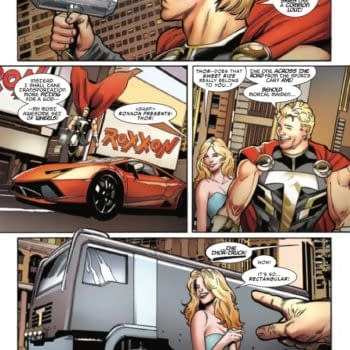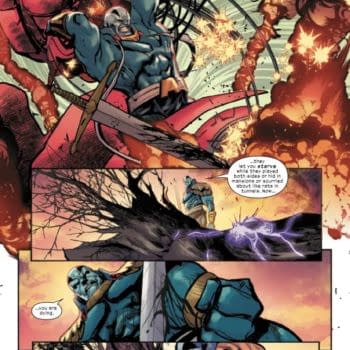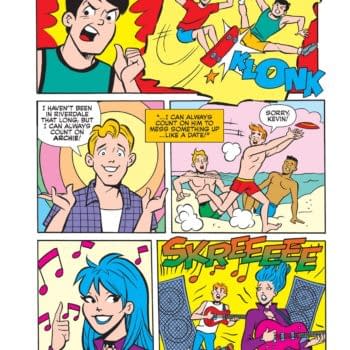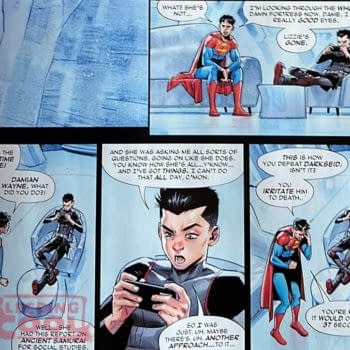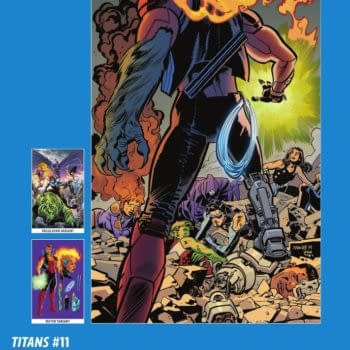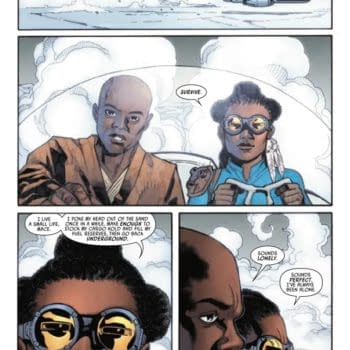Posted in: Comics, Recent Updates | Tagged: Christopher Chuckry, Comics, dc comics, entertainment, green lantern, J.M. DeMatteis, Seth Fisher, Tom Orzechowski, Willworld
Unsung Masterpieces: Exploring Willworld with J.M. DeMatteis
By David Dissanayake
Welcome back to the long delayed new installment of Unsung Masterpieces, the column where we unearth gorgeous hidden gems from the overlooked alleys of comicbook-dom and interview their creators to learn about the work straight from them.
This installment we'll be delving into the wonderfully psychedelic Willworld written by J.M. DeMatteis, illustrated by the late, great Seth Fisher, colored by Christopher Chuckry, and lettered by Tom Orzechowski.
Willworld is a Green Lantern story published by DC Comics but that is where its similarities to mainstream superhero comics ends. This is a decidedly unique kind of superhero story – one that probes the mystical undertones of life, will, and psychology in a way that shows just how vibrant and useful superheroes can be as a story telling platform.
Now if you don't know who Seth Fisher is, I suggest you familiarize yourself with his work as fast as you can. Fisher was an mind-blowingly inspired talent whose time in the world ended too soon when he fell from a roof in Osaka, Japan in 2006. He only produced a handful of books before his death, but he will always remain one of the modern greats, right up there with J.H. Williams III and Frank Quitely. It is such a saddening thing to know we'll never see what he had up his sleeve next.
Willworld is beautifully psychedelic book in both its form and content – in the most literal sense of the word (derived from ancient Greek, meaning "mind manifesting"). If you've read it, you know exactly what I'm talking about.
The story begins with a dazed and confused Hal Jordan wandering around on a bizarre horse-giraffe in the Land of Odd, perhaps the most surreal landscape ever rendered in the history of comics. Hal has no recollection of who he is, where he is, or why he's here surrounded by the strangest collection of characters and landscapes. As he travels into more and more bizarre territory, Hal slowly begins to learn who he is and why he's in this surreal world. Sounds simple enough, but believe me, this is not your typical adventure story.
The journey takes us through the Land of Odd into the depths of Hal Jordan's psyche, and then behind the veils of reality itself before making you question if anything was ever real at all. It's a tough story to talk about because it's just so bizarre, but I will give you spoilers because it is a truly odd journey that you must take on your own.
Believe me: Willworld is ingenious.
And without further ado, I give you J.M. DeMatteis:
David Dissanayake: To start, can you tell us a little bit about how Willworld came to be, and how you and Seth come to work together on this decidedly different Green Lantern book?
J.M. DeMatteis: It started for me when I pitched my children's fantasy series, Abadzad, to DC…and they turned it down. Editor Joey Cavalieri was firmly behind Abadzad and we discussed the possibility of doing a graphic novel starring a DC character that would have the playfulness and imagination of the best children's books. Then Joey showed me Seth Fisher's extraordinary work (which blew me away) and someone—I honestly don't remember who (could've been me, could've been Joey, could've been Seth)—came up with the basic concept of going inside the power battery, where imagination would be totally unfettered.
DD: What was the collaboration like between you and Seth? Like all truly great comics, Willworld has that kind of flawless meshing of the written and the drawn where it's almost impossible to tell which came first, the art or the script. I was hoping you might be able to go into detail about the creative process between you and Seth for Willworld?
JMD: I wrote a detailed plot, with all the basic action/character beats laid out, but Seth, being Seth, took all that an added immeasurably to it. I'd ask for what I thought was some strange surreal scene and he'd come back with something that went far beyond what I imagined, adding fantastic details that always left me with my jaw hanging open. Since we were working plot-first, I could incorporate Seth's new visuals into my story so that it all flowed together in a natural way.
Seth and I didn't talk a lot during the process, but, when we did, he was always deeply thoughtful, inquisitive, trying to understand my goals with the story. He seemed like a very smart, very passionate, guy. And what a talent! Such a tragedy that he died so young.
DD: What would you say are the intellectual/philosophical/spiritual influences or inspirations on this book? It's pretty heavy with a lot of spiritual themes, and I'm curious as to what you were reading/watching/listening to/practicing that may have found its way in to Willworld.
JMD: Well, I've always been fascinated with the spiritual/metaphysical side of life. I've been a follower of the Indian spiritual master Avatar Meher Baba since I was nineteen and that connection radiates out into everything in my life. Along with that I'm often reading works on metaphysics. I don't remember what, exactly, I was reading back then—it's been a long time—but I know that the story was informed by my belief that all of Creation is ultimately a dream that we're dreaming with God and that—much like GL—if, in concert with the Divine, we focus our will and imagination, we can make this the most beautiful dream ever dreamed.
DD: When you look back at Willworld, what are your thoughts and feelings about the work? What does it mean to you when you look at it in the larger body of the work you've done so far?
JMD: Well, thematically it fits very well in my larger body of work, because it deals with so many themes that obsess me. But the main thing I feel, looking back, is gratitude for having had a chance to work with Seth Fisher, whose time with us was so heartbreakingly short.
DD: Were there any lessons you learned in the making of such a fun and innovative book? What were you really happy with, and what, if anything, would you have done differently?
JMD: I never really thought about it, but, in some ways, Willworld was a rehearsal for all-ages projects like Abadzad, Stardust Kid and The Adventures of Augusta Wind. Despite its philosophical bent, Willworld is, first and foremost, a playful fairy tale, an exercise in imaginative world-building, a chance to dance on the more fanciful edges of the comic book universes. As for what I'd have done differently—nothing. I'm sure if I wrote the book now it would be different, maybe better (because, I hope, I'm a better writer), but I've learned to respect my younger self and let past work—the brilliant and the awful—stand on its own without me dissecting it. That said, Willworld is a project that was great fun—a real stretch of the imagination-muscles—and, as noted, I'm so glad Seth Fisher was the artist who brought it to life.
I didn't have many interactions with Seth, but we had several long phone calls discussing the book. He was filled with questions, looking at the story from every possible angle, probing for my philosophical core, my deepest intentions for the story. He was bubbling over with ideas: a real thinking artist; which, of course, showed in his extraordinary pages.
Dedicated to Seth Fisher: 7/22/1972-1/30/2006
David Dissanayake is Senior San Francisco Correspondent at Bleeding Cool. Give him a shout on Twitter @dwdissanayake
















